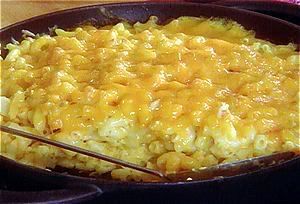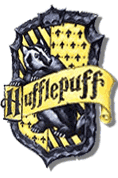The Wizarding Times
The Comfort of Casseroles
In the part of the world in which I live, Fall is slowly making it's lovely approach down the lane. Nothing makes me feel better during the cooler months than comfort food.
We each have our own different comfort foods. Some people love their Mother's soup, their Grandmother's mashed potatoes, or their Father's roasted chicken. We all have those foods that take use back to childhood. It's something that is ingrained in us as human beings.
One of my favourite comfort food categories is the casserole. There are literally hundreds of varieties of this comfort food.
From tuna casserole (not one of my faves *grin*), to macaroni & cheese, to chicken casserole! It's a one dish way to cook really comforting food.
According to The Food Timeline, the word casserole has two meanings. It can either be an actual recipe for foods cooked together slowly or, the actual dish used to hold/cook the food. That's why it's called a casserole dish, whether you are cooking a casserole or a piece of chicken.
The cooking method seems to be derived from the ancient practice of slowly stewing meats and vegetables in earthenware containers. You can imagine that in the past, they didn't have microwave ovens and quick-heating ovens. They had to rely on fire and slow cooking! What we call comfort food today was actually a necessity long ago. They had no choice in the matter (other than eating things raw!).
"Early 18th century casserole recipes [the word entered the English language in 1708] typically employed rice which was pounded and pressed (similar to the pastry used for pies) to encase fillings. Like their medieval ancestors, they were both savory and sweet. The casseroles we know today are a relatively modern invention. Casserole cookery is known in other cultures and cuisines as well: the tagines of Morocco and the mud-encrusted Beggar's Chicken of China are two examples." -- The Food Timeline
The word "casserole" entered the English language round about 1708. However, the word itself has a long and complex history.
"...starting with a classical Greek term for a cup (kuathos), progressing to a Latin word (cattia), which could mean both ladle and pan, then becoming an Old French word (casse...), which then became casserole...Historically, casserole cookery has been especially popular in rural homes, where a fire is in any case burning all day and every day...Although casserole is a western term, the use of cooking pots which would be called casseroles in Europe or Americas is almost universal in Asia."
--- The Oxford Companion to Food, Alan Davidson [Oxford University Press:Oxford] (p. 143)
It's a one-dish wonder, this casserole cooking!
My one crystal clear memory of food as a child is the bringing of casserole dishes to potluck dinners. Every few months, I would see a wondrous array of casserole dishes at funerals, church gatherings, houses of adults, and the like. As a child who was destined to become the cook of the family, I always wondered at how these women had created such lovely textures and flavour and combined them into one cooking dish.
To this day, I'm not a fair hand at casserole dishes--probably because my mother didn't cook them very often. I am learning, however and I would say that casseroles freeze beautifully, can be of any ratio of foods (high or low fat) that you want, and can demonstrate flavours from the simple to the extraordinary.
So, I'm going to leave you with one of my favourite casserole recipes--macaroni & cheese. It's a classic, especially in the American South (my area of the world).
I'm giving over Paula Dean's recipes (she of the Food Network show and numerous cookbooks). It is my favourite that I've found.

The Lady's Cheesy Mac
recipe by: Paula Dean
Ingredients:
4 cups cooked elbow macaroni, drained
2 cups grated cheddar cheese
3 eggs, beaten
1/2 cup sour cream
4 tablespoons butter, cut into pieces
1/2 teaspoon salt
1 cup milk
Directions:
1. Preheat oven to 350 degrees F.
2. Once you have the macaroni cooked and drained, place in a large bowl and while still hot and add the cheddar.
3. In a separate bowl, combine the remaining ingredients and add to the macaroni mixture.
4. Pour macaroni mixture into a casserole dish (remember to firmly and carefully jiggle the dish so that the liquid goes into the elbow macaroni!)
5. Bake for 30 to 45 minutes. Top with additional cheese and bake slightly longer to melt top layer if desired.
6. Let sit for a few minutes to cool a bit--then, scoop out and serve!
